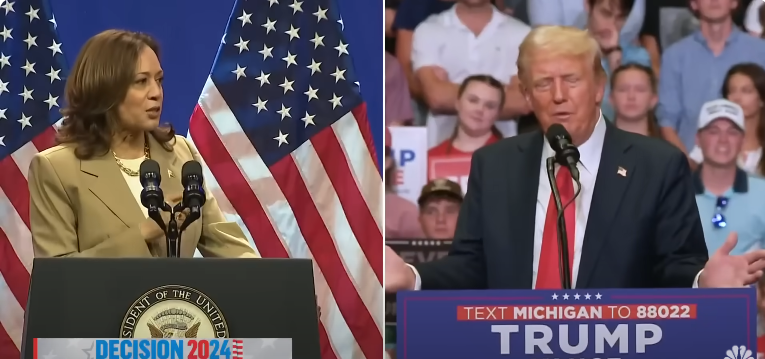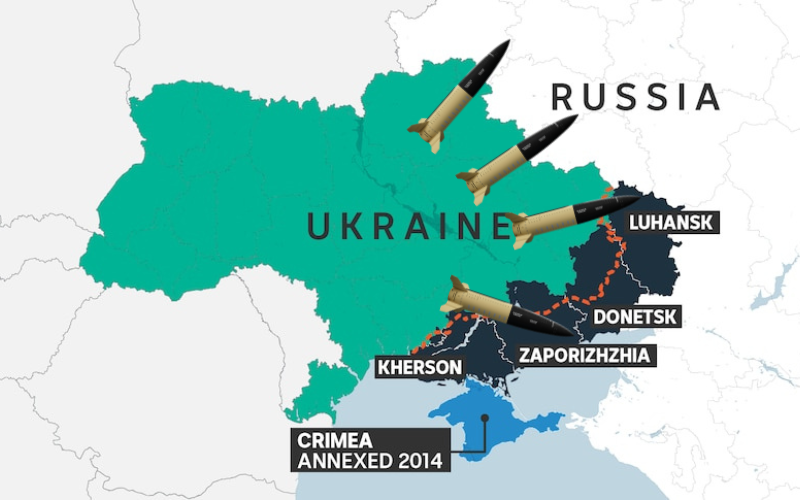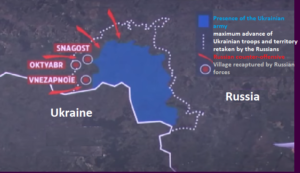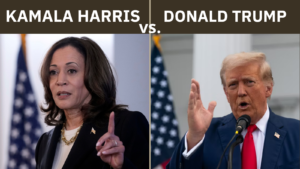Trump ‘Is in Trouble’: What Recent Polls Mean for the 2024 Presidential Race
The political landscape in the United States is shifting dramatically, and recent polling data suggests that former President Donald Trump may be in significant trouble as the 2024 presidential election approaches. In several battleground states, numbers that once favored Trump are now showing a different trend. Let’s take a closer look at why these polls are causing concern for Trump’s campaign, how the Harris-Walz ticket is capitalizing on this momentum, and what this could mean for both parties moving forward.

A Tough Battle for Trump: Polls Indicate a Struggling Campaign
Since June, President Joe Biden and his team trailed behind in key battleground states such as Arizona, Nevada, Georgia, and North Carolina. However, recent surveys indicate a shift in voter sentiment. The Harris-Walz campaign has seen a surprising surge, particularly in states that have historically leaned Republican. This shift is reflected in new polling data showing Kamala Harris leading by one point in Arizona and two points in Nevada, albeit within the margin of error.
Matthew T. Dowd, a senior MSNBC political analyst, and former chief strategist for George W. Bush’s 2004 campaign, remarked that Trump “is in trouble.” He notes that Trump’s behavior of attacking polls, including those from traditionally supportive outlets like Fox News, is a telltale sign of a struggling campaign. “Anytime Donald Trump is attacking the polls, you know he’s in trouble,” Dowd commented. This deviation from his usual strategy of promoting favorable poll numbers shows an apparent shift in confidence within Trump’s camp.
Why the Sun Belt States Are Critical
The Harris-Walz campaign has focused on the Sun Belt states, a region that has traditionally been a Republican stronghold. Gabe Gutierrez, following the Harris campaign, pointed out that the recent polling numbers justify Harris’ decision to kick off her post-DNC tour in Georgia. The Sun Belt states, including Arizona, Nevada, and North Carolina, are now fiercely competitive.
This strategic shift is significant. The expansion of the electoral map beyond the typical swing states suggests that the Harris-Walz campaign is playing an aggressive game, looking to secure a win not just by a narrow margin but with a more comprehensive mandate. As more states like North Carolina trend towards purple, the Harris campaign is positioning itself to capitalize on this momentum, which could prove decisive in the final months leading to the election.
Trump’s Diminishing Appeal Among Key Voter Groups
The recent polls also reveal a concerning trend for Trump: a loss of support among crucial voter groups. According to the survey data, Trump is losing support among evangelical Christians and other traditionally strong Republican bases. Furthermore, Kamala Harris is seeing increased enthusiasm among Black voters, a demographic critical to the Democratic base. The Harris campaign’s focus on issues that resonate with minority communities, such as economic equity and social justice, appears to be paying off.
In contrast, Trump’s campaign is reportedly struggling to regain its footing. Dowd suggests that Trump has not adapted well to this changing dynamic. “Donald Trump is not only a former president but one of the most well-known people in America,” Dowd explains. “But he’s kind of stale. People know what they’re going to get with him, and they’re tired of his schtick.” This stagnation could be a major liability for Trump as the election approaches.
The GOP’s Structural Issues: A Liability or an Opportunity?
The challenges facing Trump are not isolated to his campaign alone. The broader Republican Party is grappling with what some analysts describe as a “structural issue.” Adam Jefferson, a Democratic strategist, notes that the GOP’s alignment with the MAGA movement has made it difficult to field moderate, electable candidates. “They simply cannot find reasonable, moderate candidates to win primaries,” Jefferson observed. This trend is particularly evident in states like Arizona, where Republican candidates like Carrie Lake are trailing their Democratic opponents by double digits.
Jefferson argues that the problem stems from a fundamental misalignment between what appeals in Republican primaries and what is viable in general elections. “What succeeds in primaries does not succeed in general elections,” he adds. This misalignment has led to the selection of candidates who may not resonate with the broader electorate, a trend that could potentially cost the GOP critical seats in the Senate and House of Representatives.
The Referendum on Trump: Is It Working for the Democrats?
One of the most significant outcomes of the recent polls is the shift in narrative from a referendum on President Biden’s administration to one on Trump himself. Darren Shaw, a Republican pollster, highlighted this development, noting that the Harris campaign has achieved something that seemed impossible just weeks ago: reframing the election as a choice about Trump’s leadership rather than Biden’s. “Harris is seen as the change candidate, despite being the incumbent Vice President,” Shaw explains.
This reframing could be pivotal. More Democrats, as a percentage, now support Harris than Republicans support Trump. This subtle but crucial change in public sentiment could indicate that voters are looking for fresh leadership, a sentiment that Harris and Walz are keen to tap into.
Behind the Scenes at Trump’s Campaign Headquarters
Inside Trump’s campaign headquarters, there appears to be a growing sense of disarray. With Biden no longer in the race, Trump’s team seems unsure how to position him against Harris. Dowd likened the situation to a scene from “One Flew Over the Cuckoo’s Nest,” implying chaos and confusion. Trump’s repeated references to Biden, even though he is no longer a candidate, suggest that the campaign is struggling to adapt to the new political landscape.
Moreover, there are reports of internal friction and a lack of cohesive strategy, compounded by dwindling resources. The campaign is now being forced to spend more money and time in states they previously considered secure, like North Carolina and Arizona. This redirection of resources indicates a level of panic within the Trump team, further exacerbating their challenges.
What Does This Mean for the 2024 Election?
As the election draws closer, both campaigns face significant challenges. For Trump, the immediate task is to halt the erosion of support in key battleground states and reconnect with his base. However, this is easier said than done, given the current trends. The Harris-Walz campaign, on the other hand, must maintain its momentum and continue to expand its appeal to undecided voters in swing states.
The political dynamics at play are complex and ever-changing. However, one thing is becoming increasingly clear: Trump is in trouble. As new polling data emerges, it will be crucial to monitor how both campaigns adjust their strategies to navigate this unpredictable electoral landscape.
Conclusion: The Road Ahead
The recent polls underscore a dramatic shift in the 2024 presidential race, with Trump’s campaign facing significant challenges in what were once considered strongholds. Meanwhile, the Harris-Walz ticket is gaining ground, leveraging new support and expanding the electoral map. As we move closer to election day, the stakes are higher than ever, and the outcome remains uncertain. But one thing is clear: Trump is in trouble, and the road to the White House is far from straightforward.














Post Comment